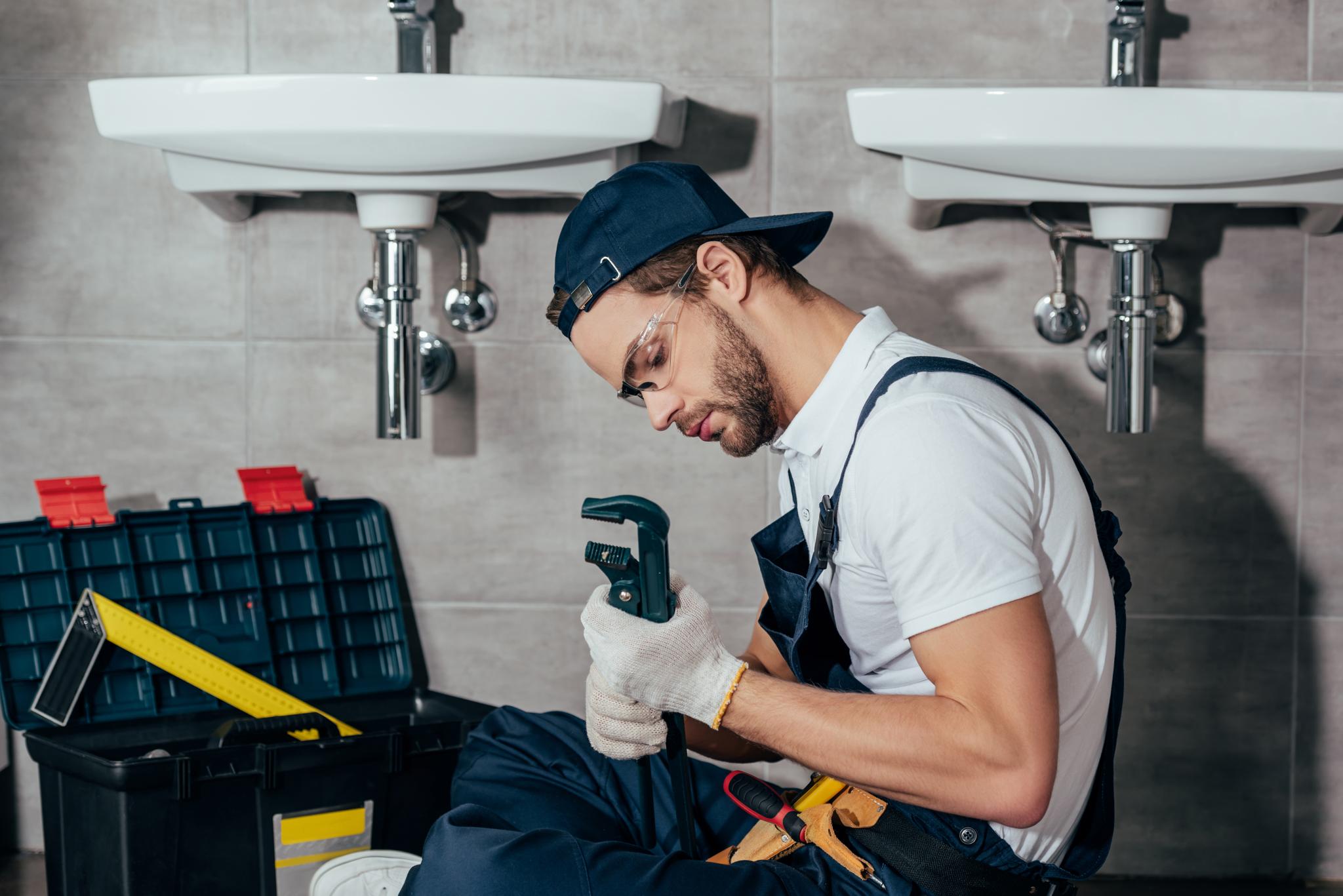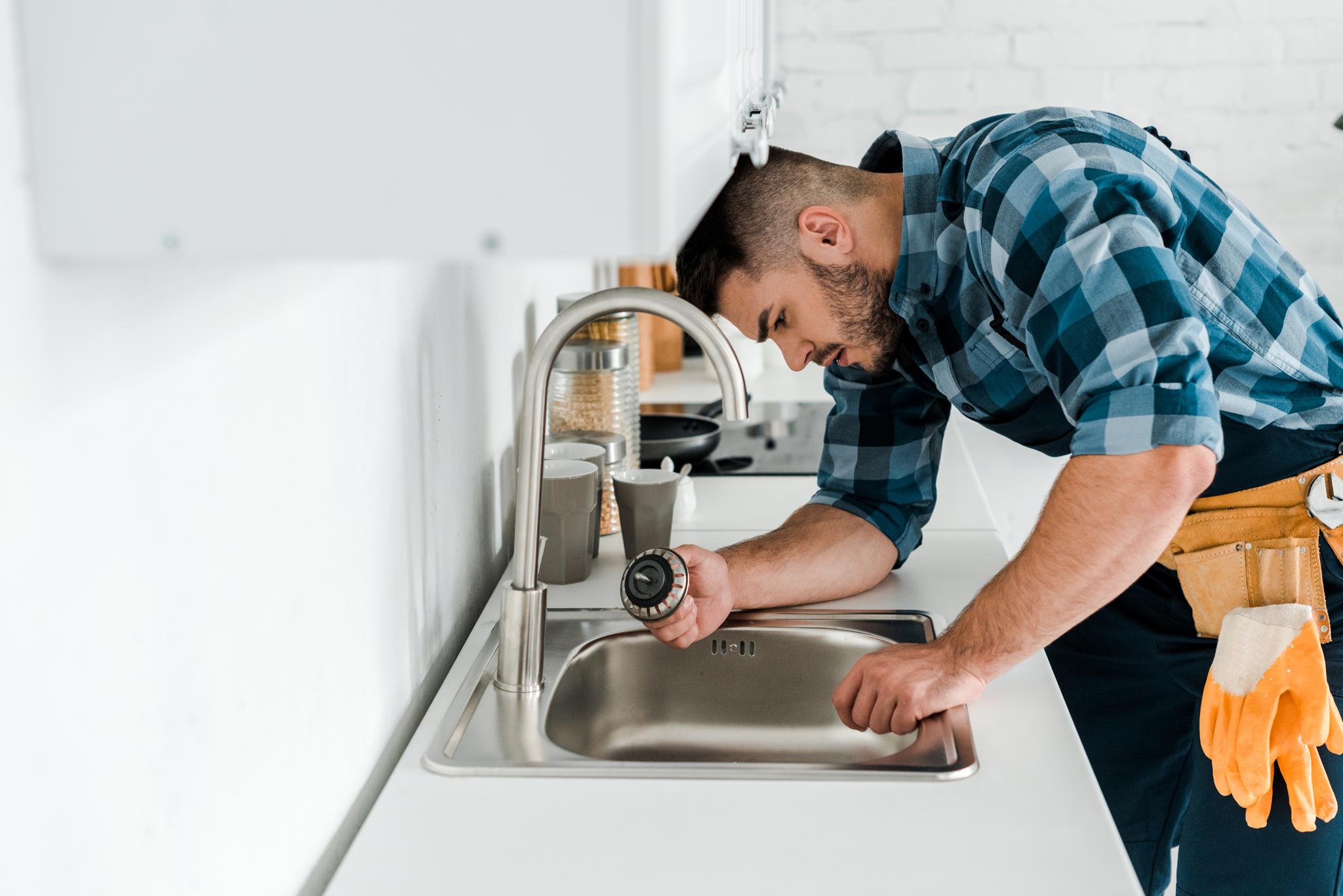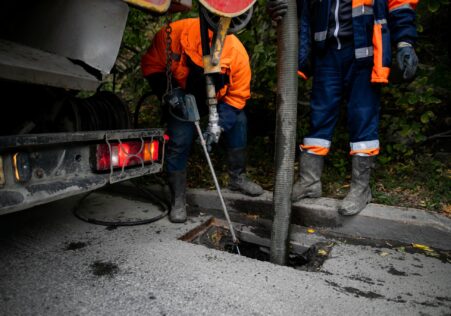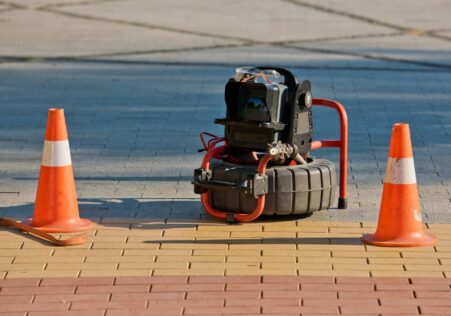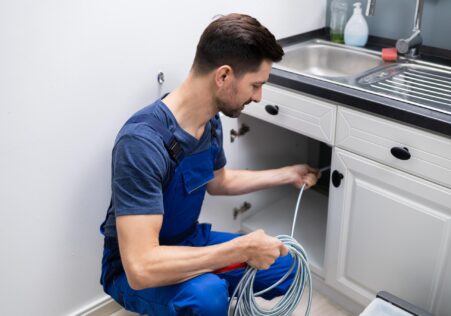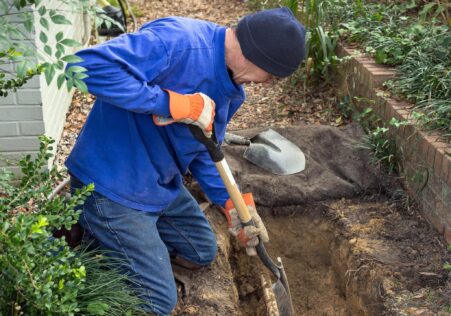What to Do When Your Toilet is Blocked: A Step-by-Step Guide

Toilet blockages can occur at any moment and are a common household issue. They can be uncomfortable and messy, and require immediate attention. However, you do not always have to call a plumber right away. In this blog post, we will guide you through some simple steps to clear your toilet within a matter of minutes.
Key Takeaways
- Toilet blockages can be solved with the use of simple tools like plungers, baking soda
The Tools You’ll Need
Before we begin, it’s essential to have these tools handy:
- Rubber Gloves
- Plunger
- Baking Soda and Vinegar (Optional)
- Hook for the Wire Coat or Plumbing Snake (Optional)
Step 1: Close your water source valve.
The first thing you need to do when you encounter a blocked toilet is turning off the valve for water flow behind the toilet. This will ensure that there is no further water entering the tank while you work on unclogging it. The valve is usually situated near on the floor of your tank on the other side.
Step 2: Protect yourself with rubber gloves.
Protect your hands from germs or bacteria present in your toilet bowl with rubber gloves prior to making use of any tools to unblock the drain.
Step 3: Use a plunger.
A plunger is undoubtedly the most efficient tool for clearing up blocked toilets. Start by pushing down upon the plunger until air is evacuated from it. then place it in the toilet and begin to plunge upwards and downwards for approximately 20 seconds. The suction generated when you plunge back and forth can help clear any obstructions.
Tips:
- Be sure to use a powerful but controlled movement.
- Place holes around sinks or shower drains if they are close by to prevent the air from escaping when you plunge.
Step 4: Try baking soda and vinegar mix.
If plunges don’t work you can try this other method add half a cup of baking soda and a cups of white vinegar to the toilet. Let the mixture sit for about 15 minutes. It will fizz a bit, and when it stops, pour hot water down (not overly hot) to clear the obstruction.
Step 5 Step 5: Use a coat hanger that is wire or a plumbing snake.
If both plunging and baking soda/vinegar techniques have failed to clear the clog, then it’s the time to employ a wire coat hanger or plumbing snake. You can straighten out the coat hanger’s wire until have a thick, thin wire that has a hook that is bent on one side or the plumbing snake which is specifically designed for clearing drain obstructions. Place the snake into the drain hole in your toilet and twist around, twist, push and pull till you experience a resistance. this is where the blockage typically occurs. Be gentle and try to break any obstructions using a back-and-forth movement without causing damages in your drainpipe.
Note:
- Don’t push or pull actions as they could result in more damage.
Step 6: Turn on the water supply, and then check the result.
Once you’ve eliminated any blockages, it is important to switch on the valve for water flow behind the toilet bowl. After that, flush it a few times to make sure the water is flowing freely!
| Tools | Description |
|---|---|
| Rubber Gloves | Hand protection from potential bacteria or germs present in the toilet bowl. |
| Plunger | Most effective tool for clearing up blocked toilets. Press firmly over the hole in your toilet bowl and plunge vigorously up and down for about 20 seconds. |
| Baking Soda and Vinegar | Mixture to use if plunging doesn’t work. Pour half a cup of baking soda and one cup of vinegar into the toilet bowl. Let this mixture settle for about 15 minutes, then pour hot water down (not boiling) to flush out the blockage. |
| Wire Coat Hanger or Plumbing Snake | Tools to use if both plunging and baking soda/vinegar methods have failed. Straighten the wire coat hanger until you have a long thin wire with a hook bent at one end or use the plumbing snake, which is designed specifically for clearing drain clogs. |
Frequently Asked Question
How do I know whether my toilet is clogged?
A obvious signs of a blocked toilet is when the water fills up to the brim after flushing. It is also possible to notice that the water drains in a slow manner, or hear the sound of gurgling directly from your toilet.
What should I do if my bathroom is blocked?
If you suspect your toilet has been blocked then avoid flushing it again as this can cause flooding. Instead, shut off the water supply at the valve on the side of the toilet. Then utilize a plunger to clear any obstructions. If this doesn’t work contact Blocked Drains Plumbing Sydney for professional help.
Can I stop my toilet from becoming blocked?
Yes! There are numerous actions you can take to keep your toilet from becoming blocked. One of them is to avoid flushing non-degradable products like Wet wipes, sanitary products or cotton wool down the toilet. Also, avoid pouring grease or oil down the sink as it will cause it to solidify and block pipes.
What is the best time to call an experienced plumber about the problem of a toilet that is blocked?
If you’ve tried plunging your toilet, but it does not unblock, or you suspect that there’s a problem with your plumbing system that’s causing frequent blockages, it’s the right time to seek out a professional plumber, such as Blocked Drains Plumbing Sydney . We’ve had years of experience dealing with any plumbing problem that we can quickly detect and correct any issue with the least disruption to your home.
When should I schedule my drains cleaned?
It is suggested that you have your drains cleaned by professionals like Blocked Drains Plumbing Sydney every 1-2 years. This will reduce the chance of obstructions and keep your plumbing system functioning smoothly. However, if you frequently encounter blockages in your drains or slow draining of water despite taking precautions not to clog the drains, then annual cleaning could be beneficial.
These techniques are fairly simple to execute as the majority of products are easily available in homes. If you’re experiencing a toilet that is blocked, before panicking after attempting all these methods, contact Blocked Drains Plumbing Sydney ‘s expert plumbers located in Sydney , if you’re searching for professional help with problems with your blocked toilets.
Additional Information
- D. I.Y Drain Cleaning: The Risks and Benefits Compared to Professional Solutions
- A Comprehensive Overview of CCTV Drain Inspection for Your Home
- Don't Let Your Blocked Drains Cause You Trouble
- Save Money and Time with Preventative Drain Care Practices
- CCTV Drain Inspections: A faster, Accurate and Effective Means of Identifying Root Issues in Drains
- From Clearing Clutter to Securing Access Points: The Preparations You Need for a Successful CCTV Drain Inspection
- Drains 101: Essential Tips for Keeping Your Pipes in Good Condition
- Why Condo Complexes are Switching to Trenchless Pipe Relining Methods
- The Benefits of CCTV Drain Inspection: Beyond Unclogging Pipes
- DIY Methods for Clearing Blocked Drains at Home


